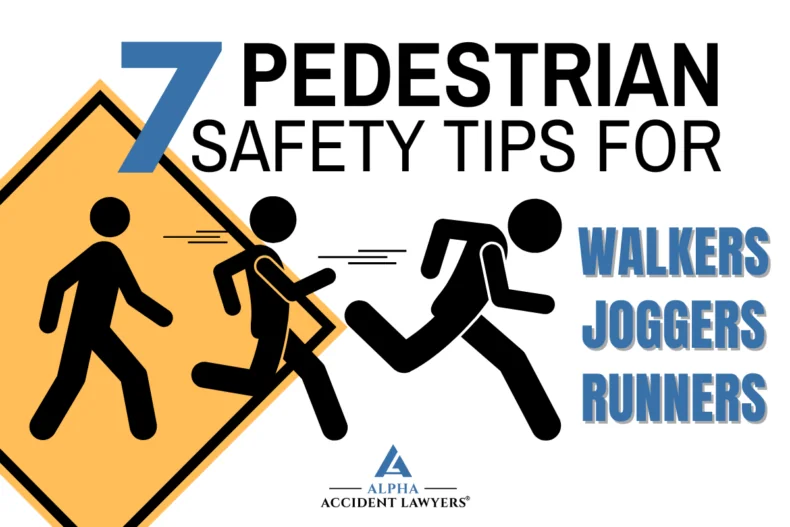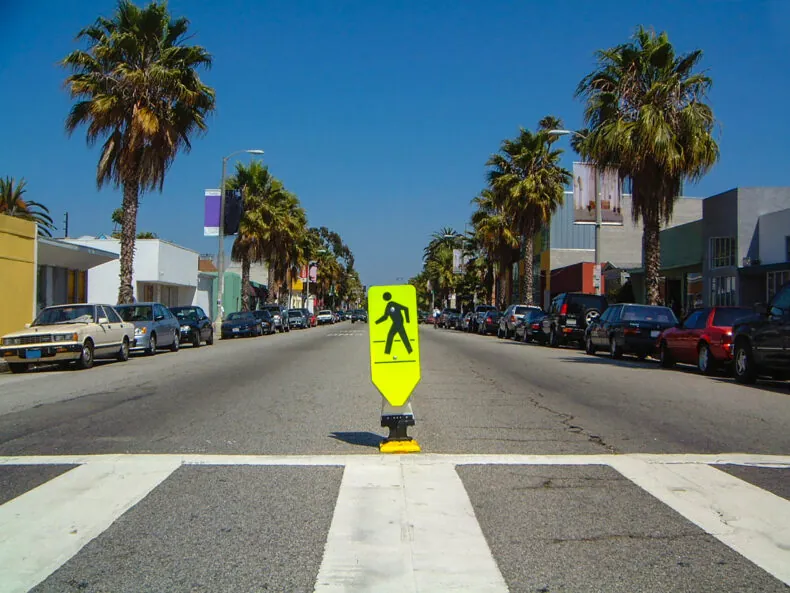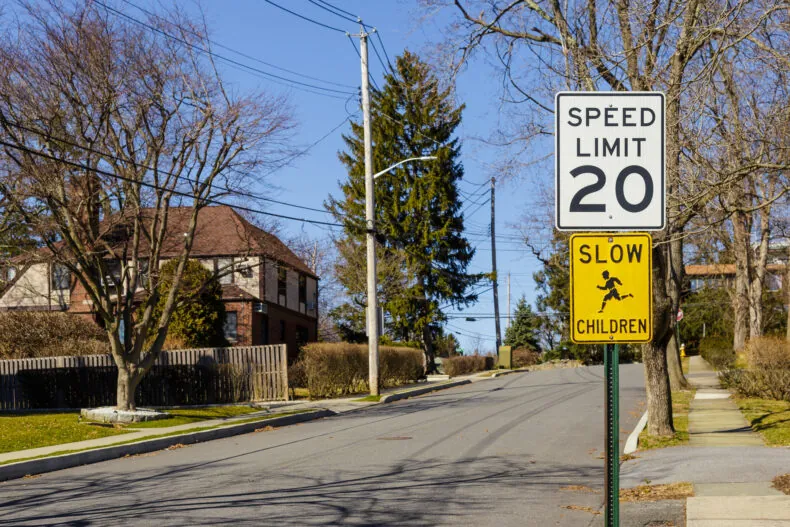7 Pedestrian Safety Tips for Walkers, Joggers, and Runners
Pedestrian safety is essential for individuals who enjoy walking, jogging, or running. The National Highway Traffic Safety Administration estimated that there were 42,975 traffic fatalities in 2022. There were more than 7,000 pedestrian deaths across the United States in 2020. Pedestrian deaths are on the rise, skyrocketing to 7,485 fatalities in 2021. Notably, this is the highest number of pedestrian fatalities recorded in the past 40 years.
Whether you’re walking through your neighborhood, running in urban areas, or hiking, it’s essential to stay alert and prioritize your safety. In this article, we will explore 7 beneficial pedestrian safety tips to help avoid traffic crashes.
Follow the Rules of the Road
When walking, jogging, or running, it’s crucial to follow traffic laws, just like drivers are expected to. Ensure you obey traffic signals and signs, and cross streets only at designated crosswalks or intersections. Following these rules can help reduce the risk of accidents and ensure a safer journey.
Pedestrians must obey pedestrian signals. For example, when there is a traffic light that shows the words “Walk” or shows a “walking person” signal, it is legal to start crossing the street. When the words “Don’t Walk” or show a raised hand, you may not cross the street. If you were already crossing the street when the lights start flashing, showing a raised hand, you can finish crossing. Where there are no specific pedestrian signals, pedestrians must obey the traffic signal lights.
If there is a “No Pedestrian Crossing” sign, it is prohibited for pedestrians to cross the roadway or area. Pedestrians can be held accountable if they cross an area that forbids pedestrians to cross and cause an accident.
Use Sidewalks Whenever Possible
Whenever sidewalks are available, use them rather than walking or running on the road. Sidewalks provide a designated space for pedestrians, keeping them separate from vehicular traffic.
If there are no sidewalks, try to walk facing traffic, to maintain visibility. Walking or running on the same side of the road as traffic allows you to see oncoming cars and react to them. Ensure you walk as far away from traffic as you are safely able to.
Cross the Street at Crosswalks or Intersections
Crossing the street at designated crosswalks or intersections is important for pedestrian safety. These areas are designed to provide pedestrians with a safe path across the road. Motor vehicle drivers are more likely to anticipate and yield to pedestrians at crosswalks and intersections. Avoid crossing mid-block or jaywalking, especially on busy streets, as it puts you at a higher risk of traffic crashes.
Stay Alert and Vigilant
Remaining alert and vigilant while walking, jogging, or running as it is crucial for your safety. Avoid distractions like texting, talking on your cell phone, or listening to music. It’s best not to wear headphones or earbuds which can impair your ability to hear approaching vehicles or potential hazards.
Stay focused on your surroundings and be prepared to react quickly if necessary. It may also be a good idea to carry pepper spray as a self-defense measure and avoid secluded areas.
Wear Bright Clothing and Reflective Gear
Enhance your visibility to motorists by wearing bright and reflective clothing, especially during low-light conditions. Look for reflective gear, such as vests, armbands, or shoes, which can help drivers spot you from a distance. It’s best to walk, jog, or run in well-lit areas and to be extra cautious at nighttime. By making yourself more visible, you reduce the chances of accidents caused by motorists not seeing you.
Look for Cars That Are Turning
When crossing intersections or driveways, pay close attention to turning cars. Often, drivers focus on other vehicles and may not be actively looking for pedestrians. Make eye contact with drivers to ensure they have noticed you before crossing in front of their vehicle. If you approach a turning vehicle, ensure you give ample time and space for the driver to complete their turn before proceeding.
Watch for Cars Around Driveways and Parking Lots
Driveways and parking lots can be potential danger zones for pedestrians. Stay alert when walking in between parked cars. Be particularly cautious when crossing in front of driveways. Drivers may not see you while they are pulling into or exiting driveways. Look for approaching or exiting vehicles and make eye contact with drivers to ensure they are aware of your presence.
What Can Drivers Do to Keep Pedestrians Safe?
By following these pedestrian safety tips, walkers, joggers, and runners can significantly help reduce the risk of collisions. Motor vehicle drivers can also safety measures to help prevent pedestrian accidents. For example, drivers should reduce their speed when approaching crosswalks and school zones. Remember, being proactive, aware of your surroundings, and taking reasonable precautions are key to staying safe on the roads and pathways.
Contact An Experienced Pedestrian Accident Lawyer
If you were injured in a pedestrian accident it’s crucial to call the police immediately, seek medical treatment, and consult with an experienced personal injury lawyer. At Alpha Accident Lawyers, we are committed to helping injured victims recover compensation for their injuries and losses. Our personal injury lawyers have a proven track record of obtaining the maximum compensation available.
Our award-winning law firm has years of experience representing victims of auto accidents. We will provide the legal advocacy you need to win your pedestrian accident case. Call us today to schedule a no-risk, free consultation.
START YOUR FREE CONSULTATION





